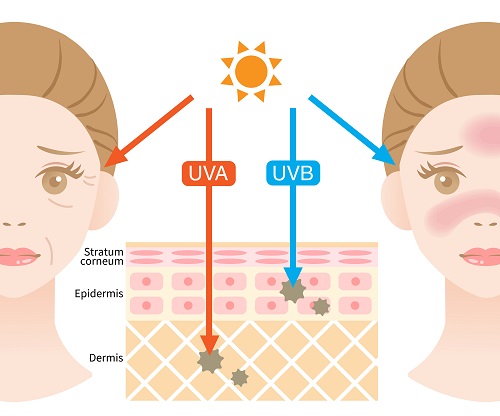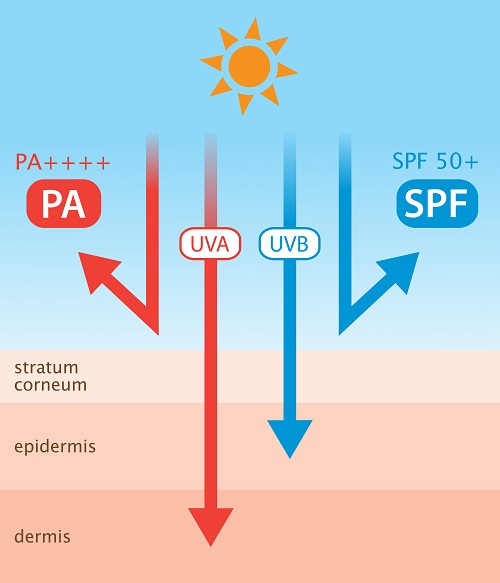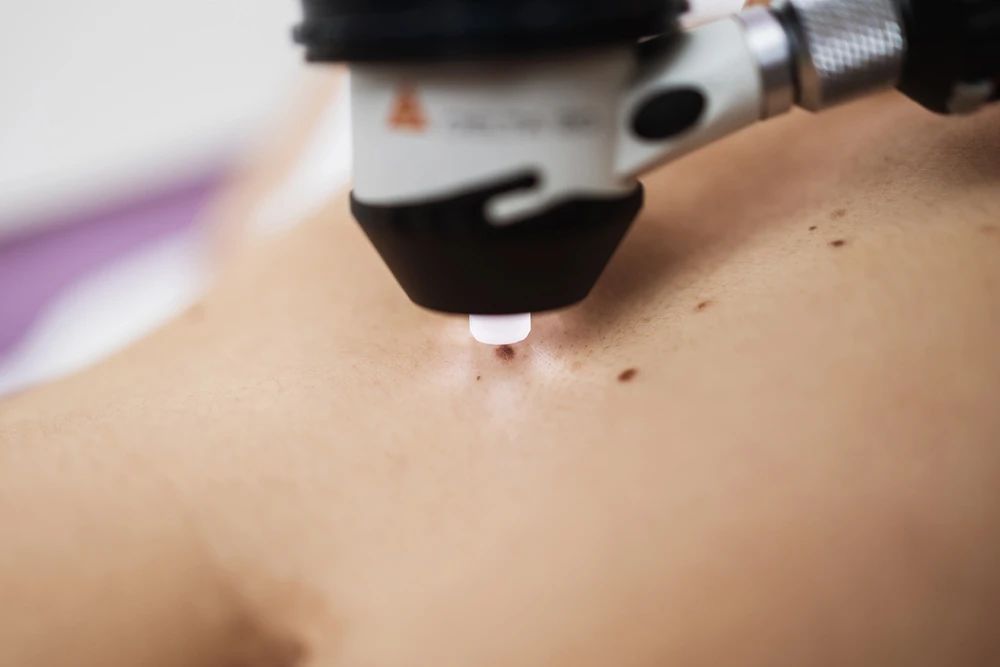Sunscreen: Why You Should Never Leave Home Without It
2021-05-06

Amidst all the supplements and fancy serums, don’t forget the most essential protection for your skin: sunscreen!
Sunny days are perfect for getting active outdoors, but the sun’s rays can badly damage your skin, especially since you’re exposed to them in more ways than you’d expect each day.
When you’re not protected with sunscreen, even a limited exposure to the sun’s radiation can cause damage to your skin. That golden tan is actually the earliest sign of sun damage, as the skin’s outer layers darken to block out the sun. Sunscreen protection is crucial to prevent further, irreversible damage to your skin.
Maybe it’s a cloudy day, and you’re planning to drive to work and spend the entire day indoors. Do you still need sunscreen? The short answer is undoubtedly yes!
Harmful UV (ultraviolet) rays penetrate through clouds, and can even reach you through car and building windows. While the damage is milder than that of direct sunlight, it still speeds up the skin’s aging process.
As one of the easiest, most affordable ways to prevent premature aging and conditions like skin cancer, here’s why sunscreen should be an essential part of your everyday routine:
How sun exposure damages your skin

The skin has a natural defense mechanism, but it’s insufficient to protect against excessive sun exposure, such as when you’re grabbing lunch out in the blazing mid-day sun.
Sun exposure harms your skin in two major ways: UVA (ultraviolet A) rays speed up aging, while UVB (ultraviolet B) rays burn your skin. Without protection, this can result in long-term damage like wrinkles, sagging skin, age spots, roughness, brown pigmentation, and darkening.
More serious health complications include hypersensitivity reactions to sunlight and skin cancer.
How sunscreen helps protect your skin
By acting as a barrier to sunlight, sunscreen is effective in protecting the skin from the sun’s damaging UV radiation.
There are 2 main categories of sunscreen: physical and chemical. Physical sunscreens often contain active minerals like zinc oxide and titanium dioxide, which work to reflect and scatter light. This allows it to act as a physical barrier that stops ultraviolet radiation from penetrating your skin.
Meanwhile, chemical sunscreens work by absorbing ultraviolet radiation, and ensuring that sunlight only reaches as far as the skin’s topmost layers.
What SPF and PA level do I need?
You may have seen these labels on your sunscreen, but what do they really mean?

SPF (Sun Protection Factor) tells you about the degree of UVB protection, while PA (protection grade of UVA rays) indicates the level of UVA protection.
Simply put, sunscreens with higher SPF ratings provide more protection from UVB rays for longer durations of time. While there’s no sunscreen that can completely block out all sun rays, an SPF of at least 30 can block up to 97% of UVB rays, and SPF 50 blocks up to 98%. If you spend a lot of time in the sun, that 1% can make a great difference for your skin in the long-run!
As for UVA rays, more + signs after PA mean a higher level of protection. It’s recommended to use a sunscreen with PA level of at least +++ to prevent premature ageing and skin cancer.
Is tanning lotion the same as sunscreen?
It’s a common error that most of us make, but suntan lotions are not sunscreen!
Suntan lotions are made to speed up the tanning process, rather than protect the skin. You can still get a tan while using sunscreen, but through a slower (and much safer) process.
Fun fact: sunscreens with an SPF of 15 or less are often also considered suntan lotions.
How do I choose the right sunscreen for my skin?

It’s important to get a broad-spectrum sunscreen, which will protect you from both UVA and UVB rays. Beyond that, choosing whether to get a physical or chemical sunscreen boils down to your skin preference.
As physical sunscreens sit on top of the skin but don’t deeply penetrate, they’re most suitable for acne-prone and sensitive skin. Physical sunscreens are also great for those who are always time-pressed – since they don’t need to be absorbed, you can apply them just before heading out. For children, the use of physical sunscreens are recommended. In general, physical sunscreens provide better protection than chemical sunscreens.
Chemical sunscreens are often more cosmetically acceptable as they do not leave a thick white sticky layer as compared to physical sunscreens. Thus, they may be a more popular choice for most people. As chemical sunscreens are absorbed into the skin, it’s important to find one that does not irritate your skin.
If you have sensitive skin, look out for sunscreens which are fragrance-free and carry hypo-allergenic labels.
As for SPF, experts recommend a daily sunscreen of at least 30+ for adequate protection, especially if your skin tone is fairer.
How do I properly apply sunscreen?
A general rule is to apply sunscreen about 15 – 20 minutes before heading out. This is most crucial for chemical sunscreens, which need time to be absorbed into your skin before they can work.
Applying sunscreen takes no longer than 5 minutes. Ensure that your skin is dry before applying it generously over all exposed areas of your body.
For the face and neck, you should expect to apply an amount at least the size of a 50-cent coin. Don’t forget the ears, back of the hands, and top of the feet!
Sunscreen should always be re-applied regularly. Protect your skin by re-applying sunscreen every 2 hours, or every hour if you’re swimming or perspiring a lot.
Consult a dermatologist should you notice anything unusual on your skin or experience any irritation or rashes with use of sunscreen or any skin products.
Article reviewed by Dr. Daniel Tsai, Dermatologist at ParkwayHealth

Copyright: Health Plus an online health and wellness web resource developed by Parkway Singapore https://www.parkwayshenton.com/healthplus/article/why-use-sunscreen
References:
1. Heng, Melissa (2017, Mar 23) What you need to know about sun protection. Retrieved on 15 June 2019 from https://www.straitstimes.com/lifestyle/protect-your-skin
2. Tan, Celine (2019, Apr 23) 8 Things About UV Rays, SPF & Sunscreen You Need To Know Right Now. Retrieved on 15 June 2019 from https://www.todayonline.com/8days/liveandlearn/vanityandhealth/8-things-about-uv-rays-spf-sunscreen-you-need-know-right-now
3. (2013, Oct 28) Sunscreens. Retrieved on 16 June 2019 from https://www.nsc.com.sg/Patient-Guide/Health-Library/List-of-Dermatological-Drugs/Pages/Sunscreens.aspx
4. White, Abigail. (2018, Oct 11) Suntan Lotion Vs Sunscreen: What’s The Difference?. Retrieved on 17 June 2019 from https://tanninglotion.org/suntan-lotion-vs-sunscreen/





























